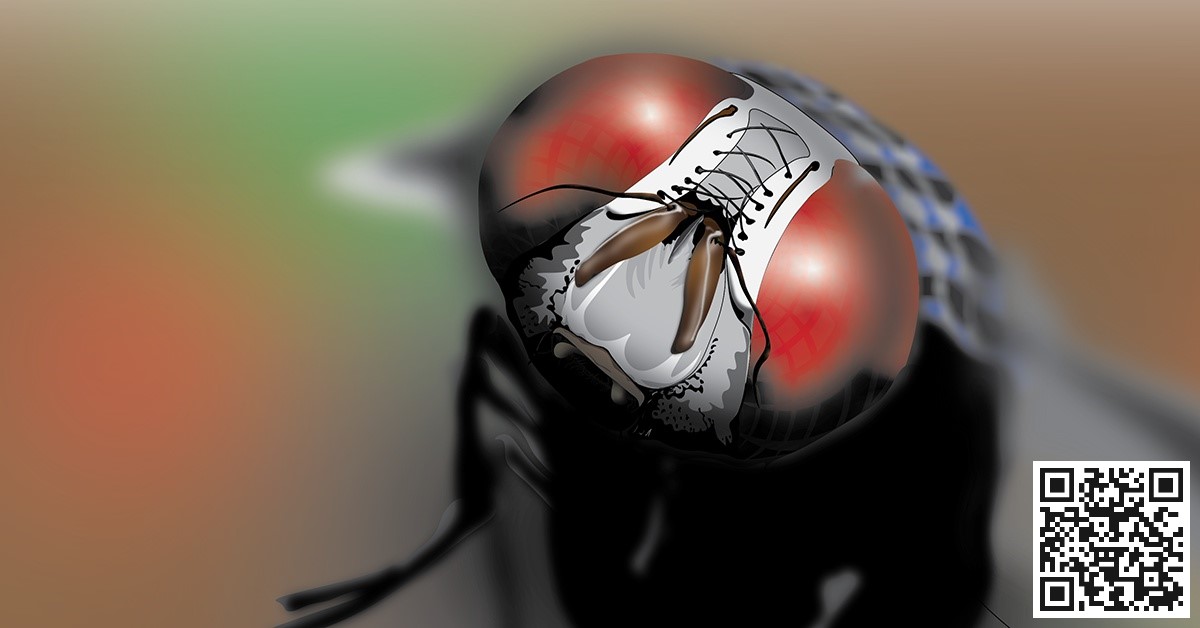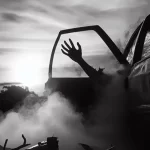‘I am Housefly’ is a poem about the housefly, presented as an anthropomorphism, that is, ‘as if the fly is talking to you’.
The Housefly is an important carrier of disease, like Shigella, Tuberculosis, Ascariasis etc. In some cases, it is also responsible for outbreaks and epidemics like cholera.
A video transcript of ‘the poem’ is shown below but each line is explained as you keep reading.
I am Housefly
I am Housefly, Genus Musca
that buzzer, like a faulty Harmonica
global, from the warmest parts of Africa
to the most frigid ends of Antarctica,
I am Housefly
bearing on each side, a compound eye
and at the center, three ocelli
all to see; nothing passes by
I wear my cloak in rich red and gray,
my hairy body for pathogen stowaway,
leg receptors to taste decay
and strong wings for quick getaway
to perpetuate my species,
I’ve evolved short metamorphosis
effective even in adverse circumstances
with breeding sites, from food to feces
My moto is ‘one thing for another’;
As I jump from your food to fecal matter,
I shed pathogens from those I shelter
well, you get disease thereafter
'I am Housefly', explained
Stanza 1 (Housefly distribution)
“I am Housefly, Genus Musca” (stanza 1, line 1)
The housefly is perhaps the most common type of fly in the world; it is practically found anywhere there are humans.
Musca domestica is the name that scientists call the housefly. Musca is the generic name or genus, while domestica is the species name.
This system of classifying living things using two names (genus and species names) is called Binomial Nomenclature.
The two-name naming system is similar to your surname and name.
“that buzzer, like a faulty Harmonica” (stanza 1, line 2)
The housefly makes a buzzing sound when it flies, as its wings move rapidly (up to 1000 times per second) and rub together.
Of course some other insects like bees and mosquitoes make buzzing sounds. The unique sound of the housefly however may be difficult to miss especially when there is a swarm of them.
The Harmonica is a beautiful musical instrument that produces music by creating different pitches of buzz.
It would be difficult to produce the buzz sound of the housefly with a Harmonica but perhaps, a faulty one will.
“global, from the warmest parts of Africa” … “to the most frigid ends of Antarctica” (stanza 1, lines 3 & 4)
As I stated earlier, the housefly is present everywhere humans are.
It generally thrives in warmer climates and was thought not to be able to withstand the harsh cold of Antarctica but rising temperatures due to climate change ensures that there is no part of the world exempt from the reach of this insect.
Stanza 2 (Housefly description)
“bearing on each side, a compound eye” … “and at the center, three ocelli” … “all to see; nothing passes by” (stanza 2, lines 2, 3 & 4)
The head of the housefly has two large compound eyes, each composed of 3,000 to 6,000 simple eyes; these simple eyes called ‘ommatidia’ cannot be focused individually.
Collectively however, they provide a mosaic view of the world around them.
Between these compound eyes, the housefly also has three simple eyes called ‘ocelli’ which help with navigation, like a compass.
The combination of compound eyes, ocelli and antennae helps the housefly to process visual information around seven times faster than humans, hence our movements appear to be very slow to them.
Stanza 3 (Other features)
“I wear my cloak in rich red and gray” (stanza 3, line 1)
Generally, the adult housefly is ‘yellowish gray’ to ‘dark gray’ to ‘black’ colored; the large compound eyes however are red, making the “cloak” essentially red and gray.
This red and gray color combination is also found in the Blow fly, Flesh fly, Stable fly and Cluster fly, therefore it may be difficult to different them on appearance alone.
The flies I just mentioned also share similar habits.
“my hairy body for pathogen stowaway” (stanza 3, line 2)
The whole body of the housefly is covered with short hairs. As the housefly is attracted to places where pathogens abound, these hairs easily pick them up. They therefore act as mechanical vectors (see stanza 4 below).
“leg receptors to taste decay” (stanza 3, line 3)
The housefly has organs of taste in the form of chemoreceptors called ‘chemosensilla’ on the legs. They are therefore able to identify food substances by walking over them.
You may have noticed the housefly rubbing its legs together; this is a way of keeping the chemoreceptors clean and effective.
“and strong wings for quick getaway” (stanza 3, line 4)
The wingspan of the housefly is about about 13 to 15 mm(0.47 to 0.59 inches), this is about twice the body length.
The housefly has just a pair of wings, but another pair of halteres, which are like vestigial wings for stability in flight.
‘Large’ wings beating at up to a thousand times a second helps the fly evade danger quickly.
Stanza 4 (Housefly life cycle)
“to perpetuate my species” … “I’ve evolved short metamorphosis” … “effective even in adverse circumstances” … “with breeding sites, from food to feces” (stanza 4, lines 1 to 4)
Metamorphosis as it applies to the housefly is the process by which it develops from the egg to the adult fly.
In optimal conditions like tropical environment and chicken manure, metamorphosis may be as short as 7 to 10 days.
The egg usually hatches within 24 hours and a female fly could lay up to 500 eggs in a lifetime. This lifetime or life span of the adult is about 15 to 25 days.
In adverse circumstances like temperate weather conditions, the life cycle may take up to two months.
Houseflies could lay eggs anywhere there is feces, carrion(decaying flesh) or ‘undisturbed’ food.
Read more about the metamorphosis of the Housefly here.
Stanza 4 (Housefly as disease vectors)
“My moto is ‘one thing for another'” … “as I jump from your food to fecal matter” … “I shed pathogens from those I shelter” … “well, you get disease thereafter” (stanza 5, lines 1 to 4)
As I stated earlier, Houseflies are mechanical vectors that is, they pick up pathogens or infectious agents unwittingly with the help of the short hairs on their bodies and may deposit them elsewhere.
NOTE: Unlike houseflies, which are mainly mechanical vectors of disease, Mosquitoes are biological vectors. Pathogens that ‘biological vectors’ carry, can multiply inside the vectors, before being transmitted, usually by biting the next host. See “Bad Malaria in the Good Child“, to learn more about the Mosquito.
If the pathogens carried on the body of the housefly, gets deposited on your food, you may get disease.
Houseflies have been responsible for disease outbreaks that have led to human mortality.
Pathogens they carry include bacteria that cause typhoid, cholera, dysentery, tuberculosis etc.
They also carry eggs of helminths (worms) like Ascaris and Trichuris as well as cysts of protozoa.
My moto is ‘one thing for another’ (stanza 5, line 1) is a testament to the fact that everywhere the housefly lands to feed, it also defecates there.
Conclusion
The housefly is a small gray insect with large red compound eyes insect that is found all over the world.
It is usually found where there is dead, decaying matter or compost and picks up germs on its body.
When the housefly perches on your food, it could deposit those germs and cause disease.




